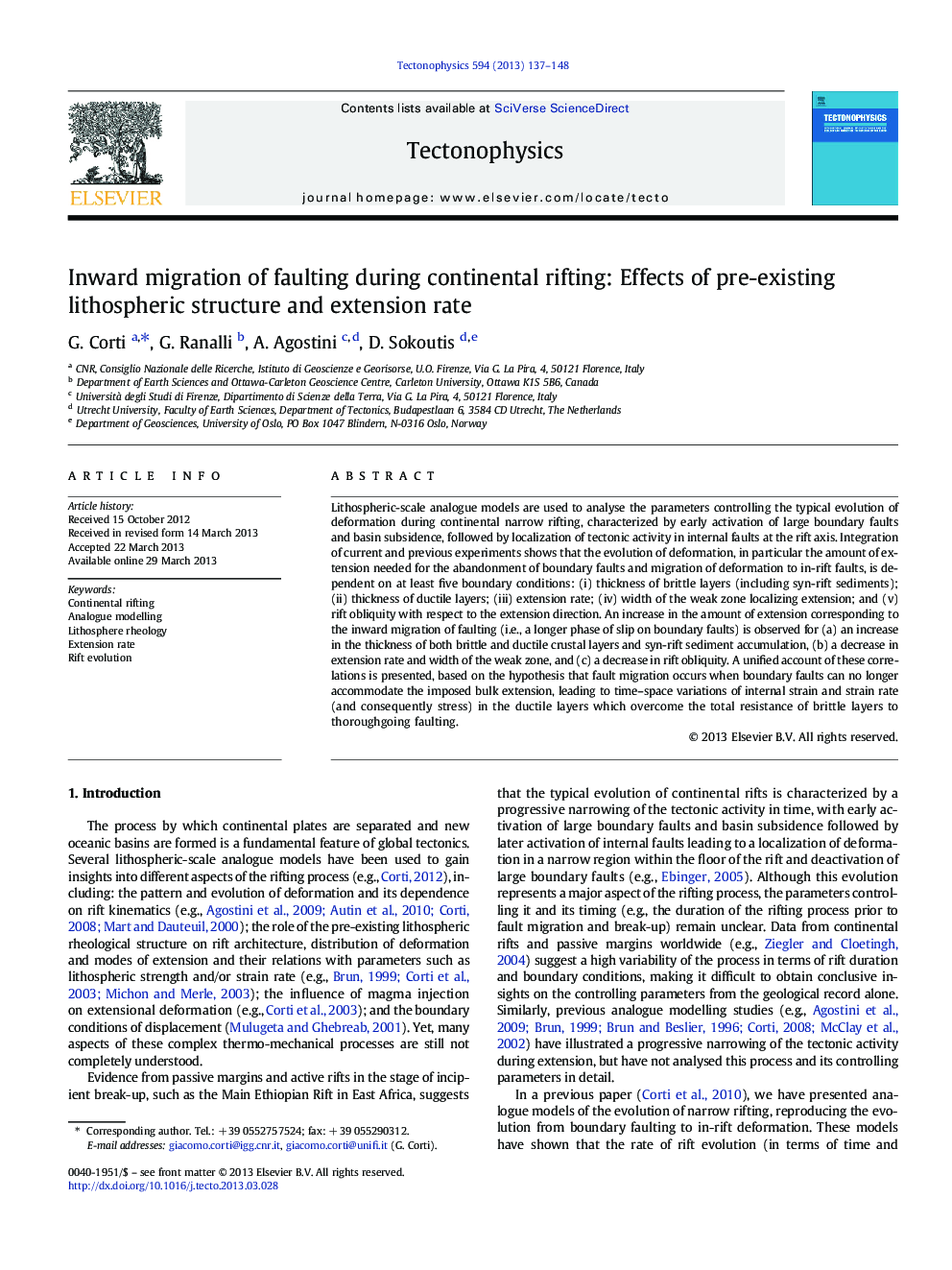| کد مقاله | کد نشریه | سال انتشار | مقاله انگلیسی | نسخه تمام متن |
|---|---|---|---|---|
| 6434154 | 1636791 | 2013 | 12 صفحه PDF | دانلود رایگان |
- Analogue models reproduce the typical inward fault migration during narrow rifting.
- Parameters controlling the bulk extension needed for fault migration are analyzed.
- Decrease in bulk extension occurs for decrease in brittle and ductile thickness.
- Decrease in bulk extension occurs for increase of strain rate, width and obliquity.
- Results are analyzed in terms of driving vs. resisting forces acting in the system.
Lithospheric-scale analogue models are used to analyse the parameters controlling the typical evolution of deformation during continental narrow rifting, characterized by early activation of large boundary faults and basin subsidence, followed by localization of tectonic activity in internal faults at the rift axis. Integration of current and previous experiments shows that the evolution of deformation, in particular the amount of extension needed for the abandonment of boundary faults and migration of deformation to in-rift faults, is dependent on at least five boundary conditions: (i) thickness of brittle layers (including syn-rift sediments); (ii) thickness of ductile layers; (iii) extension rate; (iv) width of the weak zone localizing extension; and (v) rift obliquity with respect to the extension direction. An increase in the amount of extension corresponding to the inward migration of faulting (i.e., a longer phase of slip on boundary faults) is observed for (a) an increase in the thickness of both brittle and ductile crustal layers and syn-rift sediment accumulation, (b) a decrease in extension rate and width of the weak zone, and (c) a decrease in rift obliquity. A unified account of these correlations is presented, based on the hypothesis that fault migration occurs when boundary faults can no longer accommodate the imposed bulk extension, leading to time-space variations of internal strain and strain rate (and consequently stress) in the ductile layers which overcome the total resistance of brittle layers to thoroughgoing faulting.
Journal: Tectonophysics - Volume 594, 24 May 2013, Pages 137-148
